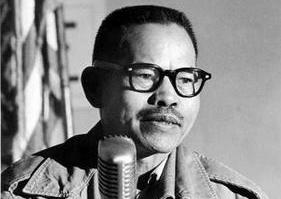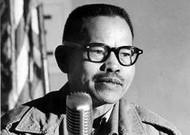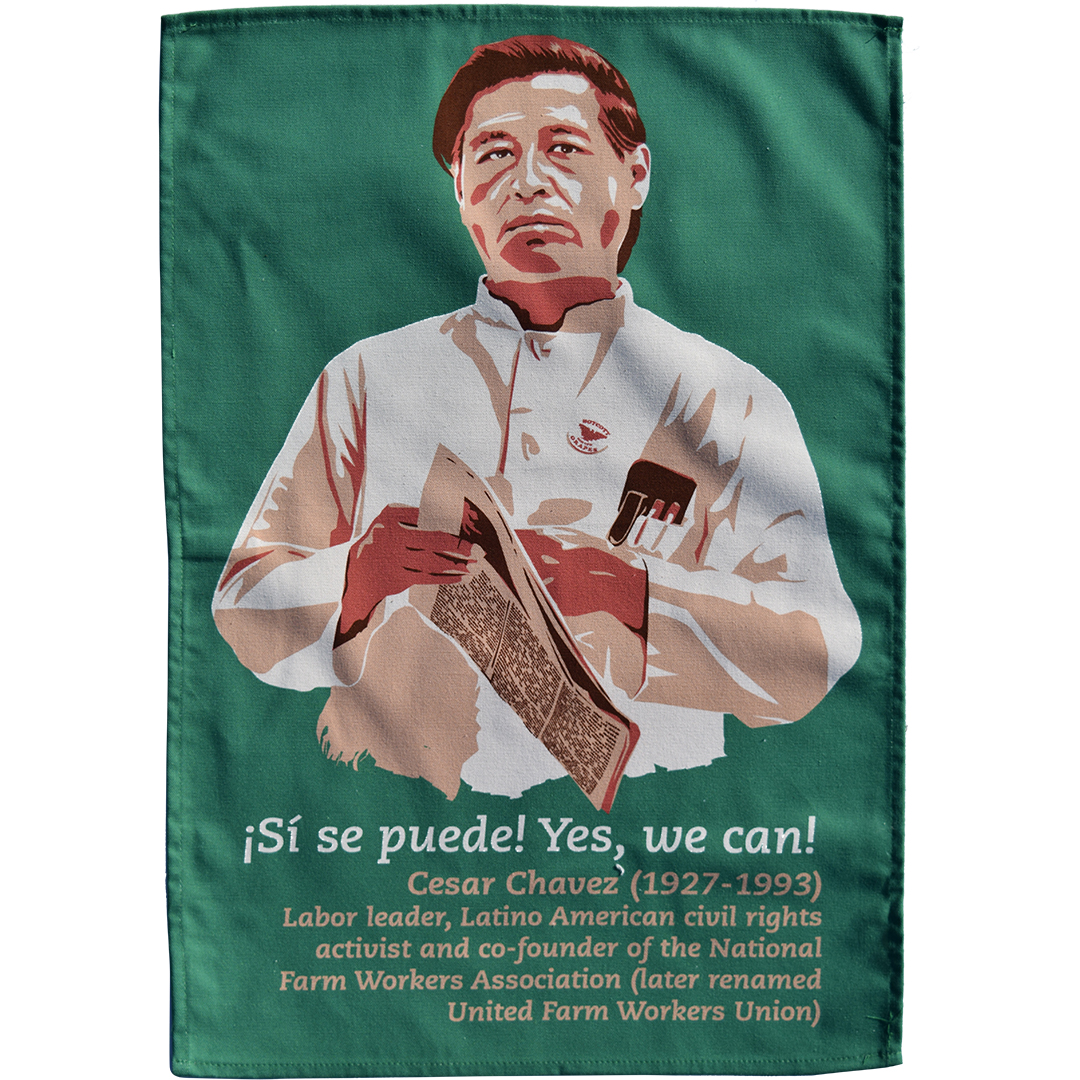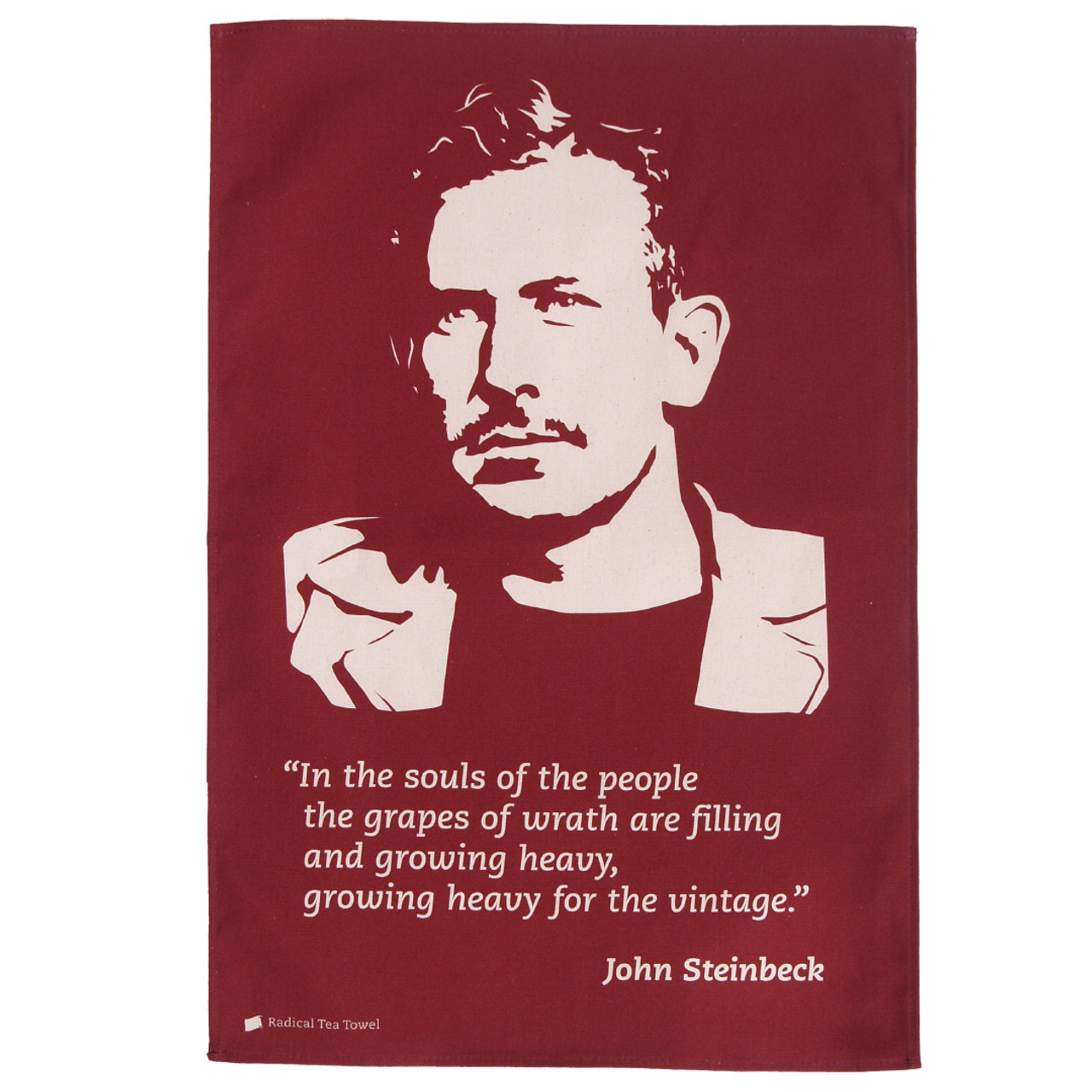Fanning the Spirit of Resistance: The Story of Larry Itliong
Posted by Pete on Oct 25th 2023
Born on this day in 1913, Larry Itliong radicalized Filipino-American workers and led their struggle for equality and dignity
The story of Cesar Chavez, the Mexican-American labor leader, is well-known - and rightly so.
But the story of his ally and fellow labor organizer, Larry Itliong, is less familiar.
Born on this day in San Nicolas, on the island of Luzon in the Philippines, Modesto “Larry” Dulay Itliong became the key working-class leader among Filipino-Americans on the West Coast of the United States.
Described as one of the fathers of the West Coast labor movement, this is Itliong’s story.
Itliong and Chavez worked together in the 1960s to fight the big grape farmers in the Coachella Valley
See the Cesar Chavez tea towel
The Philippines were under U.S. colonial rule when Itliong was born in 1913.
The U.S. had conquered the islands from Spain in 1898 and brutally repressed an anticolonial rebellion at the start of the twentieth century. They wouldn’t become independent until 1946.
Meanwhile, thousands of Filipino laborers had migrated across the American empire to work in the U.S. itself, especially
rural California.
Larry Itliong moved to the U.S. in 1929.
But he was no compliant colonial subject. Within a year, he was involved in his first strike.
Filipinos were on the frontline of a rising wave of
labor organization in the U.S.during the 1930s and 1940s, as the Great Depression radicalized workers across the country.
Steinbeck's novel The Grapes of Wrath highlighted the plight of workers during the Great Depression
See the John Steinbeck tea towel
The U.S. had conquered the Philippines to exploit the natural resources and labor of its people. But it had ended up facing a new bloc of radical workers who refused to be trodden on.
Larry Itliong fanned the spirit of resistance among Filipino workers as they faced low pay, brutal working conditions, and racism from white bosses.
Itliong spoke several of the Filipino languages, as well as English, Spanish, Cantonese, and Japanese. He was the ideal person to help organize the multilingual Filipino working class in the United States.
Itliong moved up and down the West Coast, from California up to Alaska, helping to enroll workers in labor unions.
He taught himself law (for all the U.S. claims to a ‘civilizing mission’ in the Philippines, Itliong had only been given an education up to sixth grade) which helped him respond to the various efforts of the state and the bosses to repress worker organizing.
During WW2, Itliong took a short break from labor activism to fight fascism on the high seas. He served in the U.S. Navy on a transport ship.
But after the war ended, Itliong returned home to California – and radical labor politics.

Larry Itliong was one of the great radicals of the 1960s, and his story deserves to be told far and wide
In 1948, he helped organize a strike on asparagus farms. It was the first major strike in American agriculture since the war, and a sure sign of Itliong’s success in union-building among rural workers.
In 1956, he founded the Filipino Farm Labor Union in Stockton. By the mid-1960s, he was heading up the AFL-CIO’s Agricultural Workers Organizing Committee.
And as well as being a union organizer, he was also involved in anti-racist political activism among Filipino-Americans.
During the 1960s, against the backdrop of the racist internment of Japanese-Americans during WW2 and the brutal U.S. invasion of Vietnam, there was a growth in Asian-American political consciousness inside the United States.
In 1965, Itliong helped launch the biggest strike of his career.
On 3 May, the Agricultural Workers Organizing Committee voted to strike against the big grape farmers in the Coachella Valley.
It was in the context of this strike that Itliong forged his alliance with Cesar Chavez.
Thanks to Chavez’s intervention, Mexican-American workers joined the strike. Until now, the big landlords had relied on racial divisions among the non-white working class in California to keep the workers down – no longer.
The striking grape-pickers won a huge victory against their employers in California. It was the high point of Itliong’s career.
Over the next decade, Chavez alienated Itliong, as well as many of his other allies. But Itliong continued to organize and agitate for rural workers in the U.S. until his death in 1977.
Alongside the likes of Chavez,
Martin Luther King, and the Stonewall Rioters, Larry Itliong was one of the key – if lesser-known – figures of U.S. radical politics in the 1960s, when the exploited and marginalized rose up for equality and dignity.



